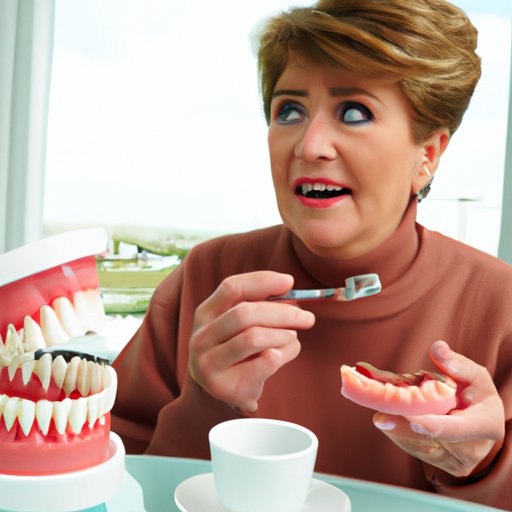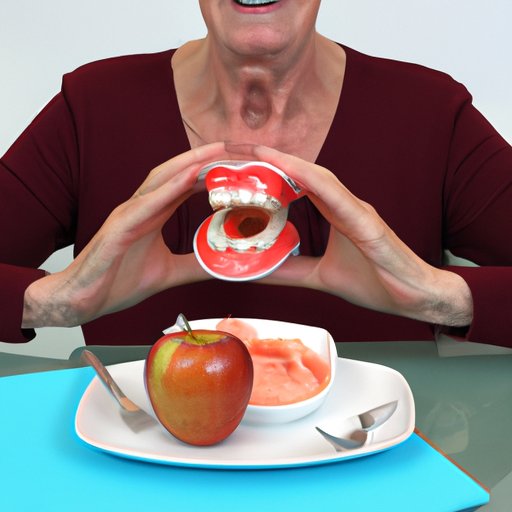Introduction
Dentures are prosthetic devices designed to replace missing teeth. They are typically made of acrylic resin and metal and fit over the gums and jawbone. Eating with dentures can be difficult at first, but with practice, it’s possible to become accustomed to them. There are several tips and strategies that can help make the transition easier and more comfortable.

Tips for Eating with Dentures
When getting used to eating with dentures, it’s important to take your time and chew slowly and carefully. Cutting food into small pieces can also make it easier to manage. Avoiding hard or crunchy foods, such as nuts or popcorn, is recommended until you become more comfortable with your dentures. Additionally, using both sides of your mouth when you eat can help distribute the pressure from chewing more evenly.
Strategies for Adapting to Eating with Dentures
Practice makes perfect! It’s important to try different foods and get used to the sensation of wearing dentures while eating. Using a mirror can help you check your bite to ensure that your dentures are properly aligned. It’s also important to visit your dentist regularly to ensure that your dentures fit correctly. Your dentist may be able to provide additional tips and advice on how to make the transition to eating with dentures easier.

What to Look Out For When Eating with Dentures
It’s important to be aware of how your dentures fit when you’re eating. If they feel loose or uncomfortable, it’s important to have them checked by your dentist. You should also check for any loose parts or broken pieces that could get stuck in your throat. Pay attention to any pain or discomfort when you’re eating with dentures, as this could indicate an issue with your fit or alignment.
Foods to Avoid When Eating with Dentures
Sticky foods, such as gum or taffy, can damage dentures. Hard foods, such as nuts or popcorn, can also be difficult to chew with dentures. Foods with tiny bones, such as fish or chicken, can also be dangerous if not chewed carefully. It’s best to avoid these types of food until you become more comfortable with wearing dentures while eating.
How to Improve Your Comfort When Eating with Dentures
Switching to softer foods can make it easier to get used to eating with dentures. Choosing the right utensils can also help – fork-tined spoons can be helpful for scooping up soft foods. Additionally, adjusting the fit of your dentures can help improve your comfort when eating. Talk to your dentist about ways to customize the fit of your dentures to ensure maximum comfort.

Practical Advice for Eating with Dentures
Using a water-soluble denture adhesive can help keep your dentures in place while you’re eating. It’s also important to rinse your dentures after each meal to remove food particles. It’s also a good idea to have a backup plan in case of accidents – having a spare set of dentures can come in handy in case something happens to your primary set.
Conclusion
Eating with dentures can be challenging at first, but with practice and patience, it’s possible to get used to them. Following the tips and strategies outlined in this article can help make the transition to eating with dentures easier and more comfortable. Be sure to visit your dentist regularly to ensure that your dentures fit correctly and to get additional advice on how to make the transition smoother.
(Note: Is this article not meeting your expectations? Do you have knowledge or insights to share? Unlock new opportunities and expand your reach by joining our authors team. Click Registration to join us and share your expertise with our readers.)
